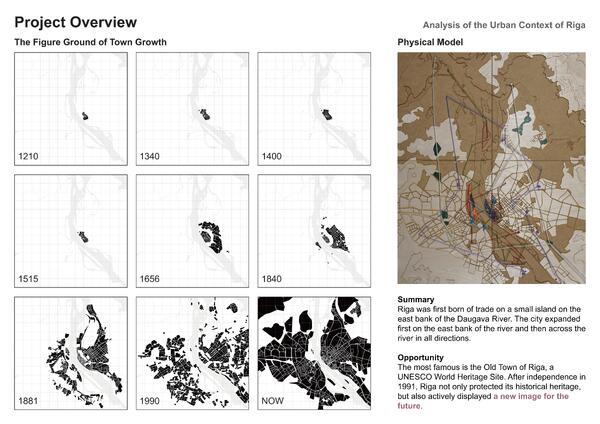KIPSALA'S STORY
The designer is keen to explore the city from different perspectives. The city's uniqueness is uncovered from its historical lineage, and the constraints and opportunities of the city are explored on the ground. The studio is divided into three stages, starting with the city and focusing on individual buildings. ‘The City at Eye Level’ is the main approach to exploring the city and is a key theme throughout the design.
The design site is located in Riga, the capital of Latvia. Originally born on a small island on the right bank of the Daugava River, Riga has expanded from the east bank to the west bank of the river in all directions, along with historical themes of trade, industry and independence. Exploration by walking is the main method of observation and analysis, experiencing the city's characteristics and interacting with the actual users of the places. Discovering several archipelagos in the city, activating and connecting them with design, as a way to develop the city as a whole (Studio A). One of the ‘archipelago’, Kipsala Island, a bridge connecting the east and west coasts, was chosen as an example for further in-depth community observation. Through the design of walking routes and the optimisation of special zones, the island's vitality is enhanced and future development possibilities are activated (Studio B).
In the final design concept for the building (Studio C), the exploration theme is continued while focusing on low-cost and sustainable themes in response to the local context. The museum on Kipsala Island spatially bridges the gap between the east and west sides of the island, while at the same time presenting the story of the past and the possibilities of the future through the theme of wooden architecture and its craftsmanship.


